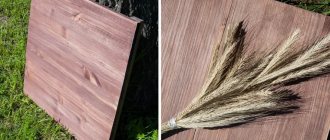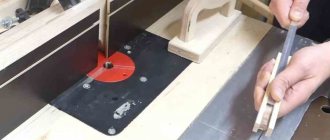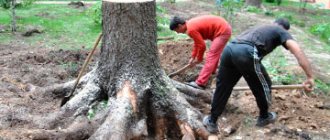Budget construction has now become relevant. People try to use the most accessible and cheap materials to build a house. This material will talk about insulation. Typically, walls are insulated with mineral wool or polystyrene foam, which are expensive. You can make homemade insulation, which will be almost equal in thermal conductivity to polystyrene foam due to the presence of air layers.
Application area
The beginning of the history of using sawdust in low-rise construction goes back to those distant times, when they began to be added to clay and used to build floors from this mixture in village houses.
Such floors can be called ideal: they served for a very long time, were not damaged in any way, had no disadvantages and had very significant advantages - low cost and high thermal insulation.
Taking this ancient technology as a basis, modern industry began to produce the same high-quality building materials - granules, wood concrete, concrete with sawdust, wooden blocks.
Sawdust also continues to be used in low-rise construction. Private developers are especially interested in this material, who insulate walls, floors, ceilings with sawdust, and also use them for other purposes as needed.
Today it is impossible to find a cheaper thermal insulation material than sawdust. To insulate roofs, ceilings, interfloor ceilings, floors and wall structures, very different building materials are used. But it is the mixture of cement, gypsum or lime with shavings and sawdust that is extremely economical when insulating any building structure.
Styrofoam harbors mice
And one more fact that needs to be pointed out when assessing the pros and cons of foam insulation is that mice breed in the material.
Expanded polystyrene is an ideal habitat for them, because it is warm and soft. Therefore, when insulating with polystyrene foam, block the access of mice. To do this, you can finish the places where rodents can enter with mineral wool, which mice do not like.
Therefore, although polystyrene foam has a number of positive qualities, we should not forget about its disadvantages. Therefore, it should be used thoughtfully and in accordance with all the technological features of the material.
The main stage of construction is insulating the house. If you make mistakes in technology or in the choice of material, you can deprive your home of the necessary heat. Expanded polystyrene boards will help keep your home cozy even when it’s frosty outside. They are famous for their low price and good thermal insulation.
Why is sawdust processing needed?
To create thermal insulation, sawdust is used, previously prepared in a special way. Without antiseptic treatment and the addition of impurities, sawdust has two significant disadvantages:
- They become very flammable
- They harbor rodents and other pests
Therefore, before starting work, sawdust is mixed with lime, cement or gypsum, and then moistened with an antiseptic solution. The resulting mixture becomes fireproof and unattractive to pests.
Do-it-yourself insulation with sawdust
Sawdust is mainly used to insulate a one-story house. If you decide to make sawdust insulation with your own hands, then you need to prepare:
- Sawdust
- Cement
- Watering can
- Shovel or stirrer
- Lime
- Antiseptic for wood (boric acid, copper sulfate)
- Mixing container
The thickness of the thermal insulation layer depends on two factors:
- Local climatic conditions
- Functional purpose of the insulated room
If the building will be used exclusively in warm weather, then a layer of insulation 25 cm thick for the ceiling and 15 cm for the walls is sufficient. If you plan to live indoors permanently all year round, then you should increase the thickness of the layer to 30 cm. To do this, you need to add racks to the main frame, which will create additional space for backfilling.
Proper implementation of sawdust insulation requires knowledge of the following points:
- Objects with a high risk of fire (switches, sockets, heating distribution) and places where electrical wiring and chimney pipes are laid must be insulated with non-flammable material. It is most convenient to hide electrical wires in 3 mm metal pipes
- A vapor barrier is not required, since the cement in the mixture will absorb excess moisture, and the wood block will become much stronger
- It should be taken into account that fresh sawdust contains specific substances that prevent the adhesion of cement to water, so the solution may turn out to be fragile. To prevent this problem, it is necessary to soak the sawdust for at least two months or moisten it with liquid glass before use.
Sawdust with cement as house insulation
How to make insulation from sawdust and cement? To create the mixture we will need the following:
- 10 buckets of sawdust
- 1 bucket of cement
- 1 bucket of lime
All components are thoroughly mixed so that the sawdust is well coated and saturated with cement and lime. After this, dilute the antiseptic in water, pour the solution into a garden watering can and irrigate the previously obtained mixture.
To check, you need to take a little of the mixture in your hand and squeeze it - if no water appears and the lump does not crumble, then everything was done correctly - the mixture is ready.
The next stage is filling the mixture and tamping it layer by layer.
It will take at least two weeks for the blocks to fully mature. The room where the work was carried out must be constantly ventilated.
After a couple of weeks, the filled areas are carefully inspected to identify voids that form during the drying process. If any, they are filled in as described above.
Warm plaster - clay with sawdust
Based on sawdust, you can prepare a solution for warm plaster. To do this, they are mixed with cement, clay, water and old newspapers.
Plaster made from clay and sawdust is used as insulation through interior decoration.
You can also make slabs from the prepared solution, compact them well and dry. Such sheets are a good thermal insulation material and can be used at your discretion.
Sawdust for floor insulation
Pure sawdust without impurities is not used today because it is easily flammable and burns quickly.
Based on them, various insulation materials are made: ecowool, wood concrete, pellets. To insulate floors with ecowool, the manual method or spraying is used. In the second case, you will need a professional blow molding machine and the services of a specialist. Purchasing such a device is impractical, since it will be used one-time, and manual processing consumes 40% more material than spraying.
When insulating the floor in climate zones where the air temperature does not fall below minus 20°C, a thermal insulation layer 15 cm thick is sufficient. If lower temperatures are possible, then for every 5°C of frost it is necessary to add a 4 cm layer of insulation.
Sawdust with lime as insulation for walls and partitions
To insulate walls and partitions, use a mixture of lime with clean, dry sawdust in a ratio of 1:10. If gypsum is used instead of lime, then the ratio must be 1:8.
A small amount of antiseptic solution (25g per bucket) is added to the finished mixture, poured into the walls and compacted. With this treatment, sawdust does not sag and is not damaged by pests.
Blocks can be made from sawdust by adding cement and copper sulfate as an antiseptic. First, the sawdust is moistened with a solution of copper sulfate, and then cement is added to it in the same ratio as lime (1:10). This amount of cement will ensure uniform coverage of the chips.
Water should be added as much as the solution needs so as not to disintegrate in your hand when squeezed. In this case, the water should not be squeezed out.
Technical indicators
Compared to traditional insulation, penoizol has many advantages. The main characteristics worthy of attention include:
- Thermal conductivity. The only low figure is 0.041 W/m/K. To ensure good performance, it is enough to lay a layer 10 cm thick.
- Soundproofing. Noise absorption is at a quite decent level. It is approximately 65%.
- Fire resistance. The flammability group to which penoizol belongs is designated G-1. Its flammability category is B-2. This indicates that it will not melt when exposed to fire. When high temperatures are reached, the material will begin to evaporate, without producing toxic substances. Under the condition of an open fire, 10 times less smoke is generated compared to polystyrene foam.
- Resistant to chemical components. The insulation does not react in any way to aggressive environments. This primarily applies to solvents of organic origin.
- Resistance to humidity. Penoizol has the ability to absorb moisture well, but it gives it away with equal success. The characteristics of the material are not affected. It is capable of absorbing up to 1/5 of moisture. Penoizol subsequently evaporates it. To prevent mold from forming on the wall, install a ventilation gap. The heat insulator absorbs approximately 20% of moisture throughout the day.
- Vapor permeability. The insulation in question is hygroscopic, and therefore allows the walls to breathe. Air circulates freely throughout the structure.
Penoizol has good vapor permeability, which allows the walls to breathe.
Other characteristics include biostability. This means that penoizol is not afraid of fungi, pathogenic microflora, and domestic rodents. The material is soft, so it adheres closely to any uneven surfaces. It fills any gaps. With a linear deformation of 9%, the compression strength is 0.5 kg per square centimeter.
They started producing penoizol relatively recently, so we can only talk about its durability. It appeared on the market only 50 years ago. But manufacturers claim that it can last up to 30 years. Environmental friendliness is another advantage, since toxic compounds are not released either during installation or during operation.
Video on how to make a foam generator:
How to make budget insulation with your own hands?
I want to say right away that the more you can shred the paper, the more (by volume) you will get insulation from the same mass of waste paper, while spending less effort on mixing. If you do not have time to carefully tear, cut or chop the paper, you can leave larger fragments of waste paper, for example, measuring 5x5 cm or even larger. But then you must first fill such waste paper with water so that the surface of the latter is two fingers higher than the layer of raw materials, and leave the waste paper to “infuse” for 1…2 days. After this, water is added to the container at the rate of 18...20 liters of water per 1 kg of waste paper. Next, it is advisable to add hydrophobic additives to the mixture, which will to some extent reduce the ability of the future insulation to be wetted with water. For example, machine oil is suitable as such an additive, which is first mixed in a separate container with water in a 1:1 ratio (by weight). The amount of oil emulsion should be 0.05...0.1% of the total mass of the barrel contents. Then the mass in the container is whipped until a more or less homogeneous suspension is obtained, using a wooden mixer. However, it is much easier to do this using an electric drill by inserting three pieces of steel wire with a diameter of 3...4 mm into its chuck and bending the ends of the sections from the axis of the drill by 35...40°.
If you want to reduce the ability of the future insulation to ignite, you need to add soda ash to the suspension, which, when heated, releases carbon dioxide (70...100 g of such soda will be required for 200 kg of the mixture).
And finally, if you want your slabs to last longer, you need to protect them from fungi (lower spore-forming plants), for which you will have to add an antiseptic to the soaked waste paper, which is boric acid powder (5...10 g of powder per 100 kg of weight) .
After a few days, the contents of the container are beaten again, trying to obtain a homogeneous mass in which the size of the remaining fragments of waste paper should not exceed 1...2 cm.
As in the first case, before actually churning the mass is stirred with a stirrer, stick or even a shovel. When the mixture becomes relatively homogeneous, they again resort to using a drill. It is most convenient to knock down the mass by inserting a metal rod with a diameter of 5...6 mm into the drill chuck, bent at the end in the form of waves or twisted in the form of a spring with a large pitch of turns. The length of the rod, of course, depends on the depth of the container, since the beater must reach the bottom. Be patient when using the drill. After all, the more homogeneous you make the mass, the more finished insulation you will get (by volume). The increase can reach 20% or more. If you don’t have a drill, you can beat the mass with the same shovel, but this, of course, will take much more time.
Now about the casting molds, which are prepared in advance. To construct the form (I call it “formwork”) you will need: a mesh (plastic or metal) with cells up to 3 mm in size, two boards and a small number of slats. The “formwork” is assembled like this. The above-mentioned boards are placed on the ground “on edge”, placing them parallel at a distance of about 60 cm from each other. Transverse slats of equal thickness, about 1.1 m long, are nailed on top, trying to ensure that the ends of the slats protruding beyond the boards are of equal length. The distance between the slats is 10...15 cm. Cover the resulting grating with a mesh and attach the latter to the slats with push pins. From slats of the same thickness (4...5 cm) a frame is knitted, the dimensions of which are slightly smaller than the dimensions of the grating. The frame is laid on the mesh and in the middle of the frame there is a transverse rail of the same thickness as the frame slats. Thus, we got a “formwork” for two sheets of insulation. You can not knit the frame, but simply fold it from slats. All that remains is to mark a line with a pencil on the “formwork” slats at a height of 1...1.5 cm in order to control the thickness of the layer of paper pulp when you lay it in the “formwork”.
Key varieties
There are different types of urea foam. All of them are suitable for thermal insulation of buildings.
Penoizol can be used for thermal insulation of complex structures, interfloor ceilings and floors.
Main types:
- Liquid penoizol. Received the greatest distribution. It can be prepared directly on the construction site, which is why it is very convenient. The material is used for thermal insulation of various structures, as well as for repair purposes. Foam is poured into a confined space to form additional sound insulation in frame buildings. When it comes to repair work, penoizol in liquid form is used to fill cracks and gaps.
- Granular penoizol. It has several names: foam insulation crumb, thermal wool. It is available in the form of elastic granules. During manufacturing, the polymer is crushed into fractions up to 15 mm in size. The volume of the finished material after grinding doubles compared to the original amount. This is a good option to save on installation costs. Granular penoizol is used to fill the cavity between walls and for laying on the floor.
- Sheet foam insulation. The liquid material is poured into a special mold. After cooling, it is cut on special machines or simply by hand until it is given the required thickness. After this, they are dried and mechanically processed. The product is used to insulate buildings under construction. Installation is carried out with dowels from the outside of the walls. Decorative panels or siding are laid on top. In addition, the slabs are laid between the joists on the floor.
More information about the production of penoizol:
Penoizol can have different densities depending on the manufacturer. It varies on average from 6 to 35 kg per cubic meter.
Industrial production and crazy hands
It’s worth clarifying right away: the idea of using paper for insulation is not new. Ecowool, one of the fairly popular insulation materials, consists almost entirely of cellulose and is made from recycled waste paper. We will devote a separate article to its properties.
However, along with the industrial production of ecowool, insulation with cardboard and paper is also practiced without their additional processing; As an option, insulation boards are made independently. We will also pay attention to this use of cellulose.
No processing
Kraft paper
Let's start by getting to know one fairly popular type of cellulose product.
Kraft paper is a very durable material that is made from long fibers of kraft pulp. Raw materials - wood; wood chips are boiled in an aqueous solution of sodium sulfide and some other substances.
It’s interesting: the process is extremely technological, since it allows the use of wood of any species. In addition, the chemicals used are recovered and can be reused.
Everyone is familiar with kraft paper in this capacity.
How is thin and thick kraft paper useful in terms of insulation?
Of course, not as a thermal insulation material.
- The classic design of a frame house is a frame made of timber, sheathed inside and outside with clapboard, OSB or plywood. The space between the outer and inner skins is filled with insulation. It is often used mineral wool, polystyrene foam and other modern materials for insulation; The heat-insulating material is protected from blowing and moisture saturation by special polymer films.
This scheme has two disadvantages:
- The materials used are of artificial origin and often continue to saturate the air in the house for many years with phenolic resins, styrene or fine mineral fibers that irritate the eyes and respiratory organs.
- They are by no means cheap.
Meanwhile, many decades ago, a very simple and incredibly cheap to implement scheme was used for insulation: the space between the inner and outer wall cladding was simply filled with sawdust - free waste from sawmills. The kraft paper served as a vapor barrier and a windproof membrane: it prevented the sawdust from becoming damp and protected the wall from the wind.
- The cheapest way to insulate a ceiling or interfloor ceiling is the same sawdust, expanded clay or slag. Bulk insulation. Kraft paper is the cheapest material for laying under insulation, which will prevent it from falling on the heads of the home owners.
Useful: kraft paper is sold and is more than inexpensive. Its price is from 25 rubles per kilogram. However, it often ends up in waste in the form of paper bags or corrugated cardboard. Small-sized bags or fragments of packaging are not suitable for the role of wind protection, but they can easily be used as a lining under fill-in thermal insulation.
An indispensable assistant!
Of course, cardboard insulation can be obtained only when laid in a thick layer - no less than 5 - 10 centimeters.
The cellular structure of corrugated cardboard should protect the packaged goods, but it will also be insulated.
However, the time spent on installation is compensated by the fact that the material will cost exactly the cost of its transportation: any large base will be only too happy to get rid of the packaging material, the removal of which it usually has to pay.
How to use cardboard insulation? The instructions are very simple: it fits tightly inside the wall frame and is sewn up from the inside. It is clear that the outer covering of the walls must reliably protect the cardboard from precipitation.
There is one nuance associated with installation. To prevent the walls from being blown through, sheets of packaging material are laid layer by layer with the joints between them offset. Fixation with a stapler is possible.
Advantages and disadvantages
They are common to both kraft paper and its derivatives.
- Cheap, cheap and once again cheap.
Insulation costs will be minimal.
- Environmentally friendly. Paper does not emit harmful substances into the atmosphere.
- Easy to use. As a wind barrier, the paper is fastened with a regular stapler; Insulating walls with corrugated cardboard also won’t make you rack your brains and look for a complicated tool.
- Material is flammable. However, in a wooden house, its fire hazard will not change the overall picture.
- Rodents make passages in paper and cardboard without any problems; Moreover, mice also appreciate the thermal insulation properties of cellulose and willingly use it to insulate their nests.
Mice will treat the new insulation without much trepidation.
- Paper is hygroscopic. If it gets wet once, this will not create problems, but constant dampness will worsen the thermal insulation many times over.
Self-production of cellulose boards
Is it possible to make more convenient paper insulation with your own hands?
Yes, you can make some kind of thin and dense insulation from waste paper. Whether the results are worth your time is debatable; however it is possible.
Here is a description of the production process.
- The paper is shredded and poured into a barrel. The smaller the fragments, the better the result. Then it is soaked for a day or two.
Water should completely fill the paper.
Improvised formwork with a mesh bottom. 1 - supports, 2 - frame made of bars, 3 - mesh, 4 - transverse axis along which the frame can be additionally tied with a cross member for rigidity.
- Spread the mixture out of the barrel in as even a layer as possible, 1.5-2 centimeters thick. Most of the water should go away immediately; During subsequent drying, the thickness of the slab changes little. Drying in sunny weather takes 3-4 days, in rainy weather - about a week.
Why doesn't paper crumble after drying? The secret is simple: cellulose contains an adhesive substance - lignin, which, when moistened, reliably glues the paper into a single whole.
Thanks to the addition of a water repellent, antiseptic and fire retardant, we get insulation with much better characteristics than conventional cardboard. However, its density - about 150 kg/m3 - is still somewhat high for high-quality insulation. However, as they say, don't look a gift horse in the mouth.
How does the wall insulation process work?
A frame is erected from wooden blocks into which the blocks are laid. Next, prepare a mixture of large sawdust, cement, sand and water. Add an appropriate amount of antiseptic and mix thoroughly. Pour the composition into the prepared forms and wait until the material is incompletely dried.
Waterproofing is laid between the wall and the insulation. Then blocks of sawdust and cement. Blocks stacked on top of each other shrink under the total weight, so you will have to add an additional layer.
Ecowool
At the beginning of the article, we mentioned the insulation industrially produced from cellulose - ecowool. Let's get acquainted with it: after all, the raw materials for its production are the same cardboard and paper.
What it is
Appearance: Gray flakes.
The full composition looks like this:
- Cellulose - 81 percent.
- Antiseptic (boric acid) - 12 percent.
- Boron (fire retardant) - 7 percent.
The insulation does not contain harmful substances; the fibers are non-volatile and even if accidentally contacted with mucous membranes cause much less irritation than mineral wool fibers.
The photo shows Ecowool cellulose insulation.
Thermal insulation qualities correspond to the degree of thermal insulation provided by basalt wool.
Important: when moistened, ecowool retains these qualities. All types of mineral wool insulation, once damp, begin to conduct heat much better.
The material does not cake and does not shrink. It has very moderate breathability, which is a definite plus: the insulation will not be blown through by wind and drafts. But vapor permeability is high, which is also good: dampness will not linger in the thickness of insulated walls and ceilings, causing accelerated destruction of load-bearing structures.
The material is chemically inert. In contact with steel load-bearing elements, it will not cause accelerated corrosion.
With all this set of advantages, the cost of a cubic meter of finished insulation when working on horizontal surfaces is about 700 rubles. On verticals, a high packing density and special equipment are used, so a cubic meter of insulation is more expensive - about 1,300 rubles.
What can be insulated using corrugated cardboard?
This material can not always be used as thermal insulation, but only in three cases when necessary:
- insulate entrance doors;
- insulate the room;
- insulate car batteries.
There are a few things to remember. When laying boards with corrugated cardboard, the result will be more vapor and wind insulation. If you use corrugated cardboard in piles, you will get air layers, which, having a closed space, will provide thermal resistance to the walls. In this case, the effect will be higher than when using polystyrene foam.
We recommend: Gas heaters for tents - how to choose, review of the best models, prices and reviews, where to buy
Corrugated cardboard insulation can also be used for doors, due to the material’s ability to reduce the appearance of condensation and provide high-quality protection from wind and drafts. The thermal insulation effect can be enhanced by combining cardboard with cotton wool.
This kind of insulation has not only advantages, but also disadvantages. Humidity has a detrimental effect on the material, so the service life of the door structure is reduced as a result of seal failure.
Finally, the third option for using cardboard will certainly be useful to car owners. A cover made of corrugated cardboard helps keep your car's battery in working condition throughout the winter. Corrugated cardboard is characterized by such qualities as resistance to freezing and reduced heat conductivity. The material prevents condensation from penetrating into the external environment, actively absorbing all vapors.











